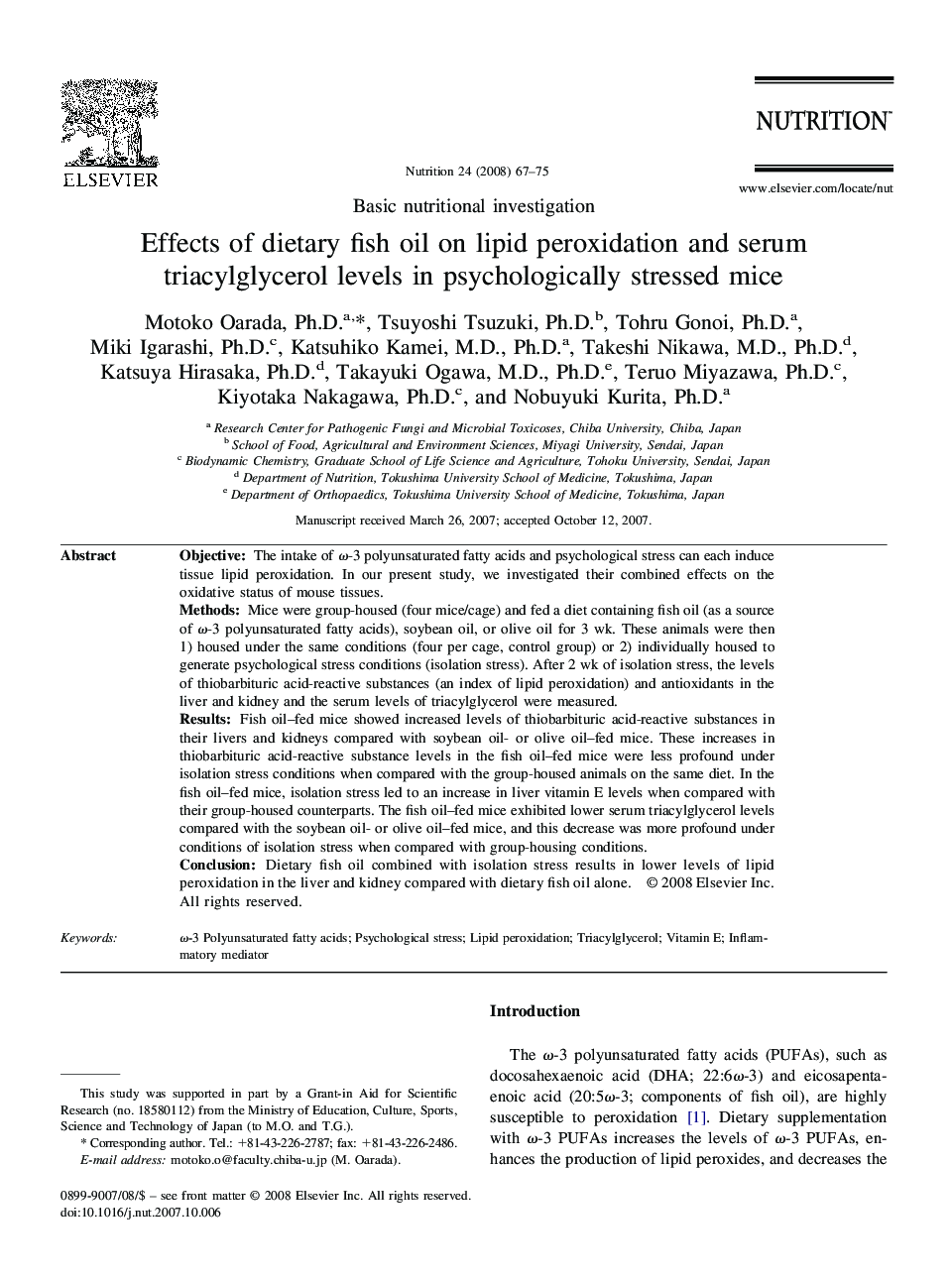| کد مقاله | کد نشریه | سال انتشار | مقاله انگلیسی | نسخه تمام متن |
|---|---|---|---|---|
| 3277624 | 1208626 | 2008 | 9 صفحه PDF | دانلود رایگان |

ObjectiveThe intake of ω-3 polyunsaturated fatty acids and psychological stress can each induce tissue lipid peroxidation. In our present study, we investigated their combined effects on the oxidative status of mouse tissues.MethodsMice were group-housed (four mice/cage) and fed a diet containing fish oil (as a source of ω-3 polyunsaturated fatty acids), soybean oil, or olive oil for 3 wk. These animals were then 1) housed under the same conditions (four per cage, control group) or 2) individually housed to generate psychological stress conditions (isolation stress). After 2 wk of isolation stress, the levels of thiobarbituric acid-reactive substances (an index of lipid peroxidation) and antioxidants in the liver and kidney and the serum levels of triacylglycerol were measured.ResultsFish oil–fed mice showed increased levels of thiobarbituric acid-reactive substances in their livers and kidneys compared with soybean oil- or olive oil–fed mice. These increases in thiobarbituric acid-reactive substance levels in the fish oil–fed mice were less profound under isolation stress conditions when compared with the group-housed animals on the same diet. In the fish oil–fed mice, isolation stress led to an increase in liver vitamin E levels when compared with their group-housed counterparts. The fish oil–fed mice exhibited lower serum triacylglycerol levels compared with the soybean oil- or olive oil–fed mice, and this decrease was more profound under conditions of isolation stress when compared with group-housing conditions.ConclusionDietary fish oil combined with isolation stress results in lower levels of lipid peroxidation in the liver and kidney compared with dietary fish oil alone.
Journal: Nutrition - Volume 24, Issue 1, January 2008, Pages 67–75